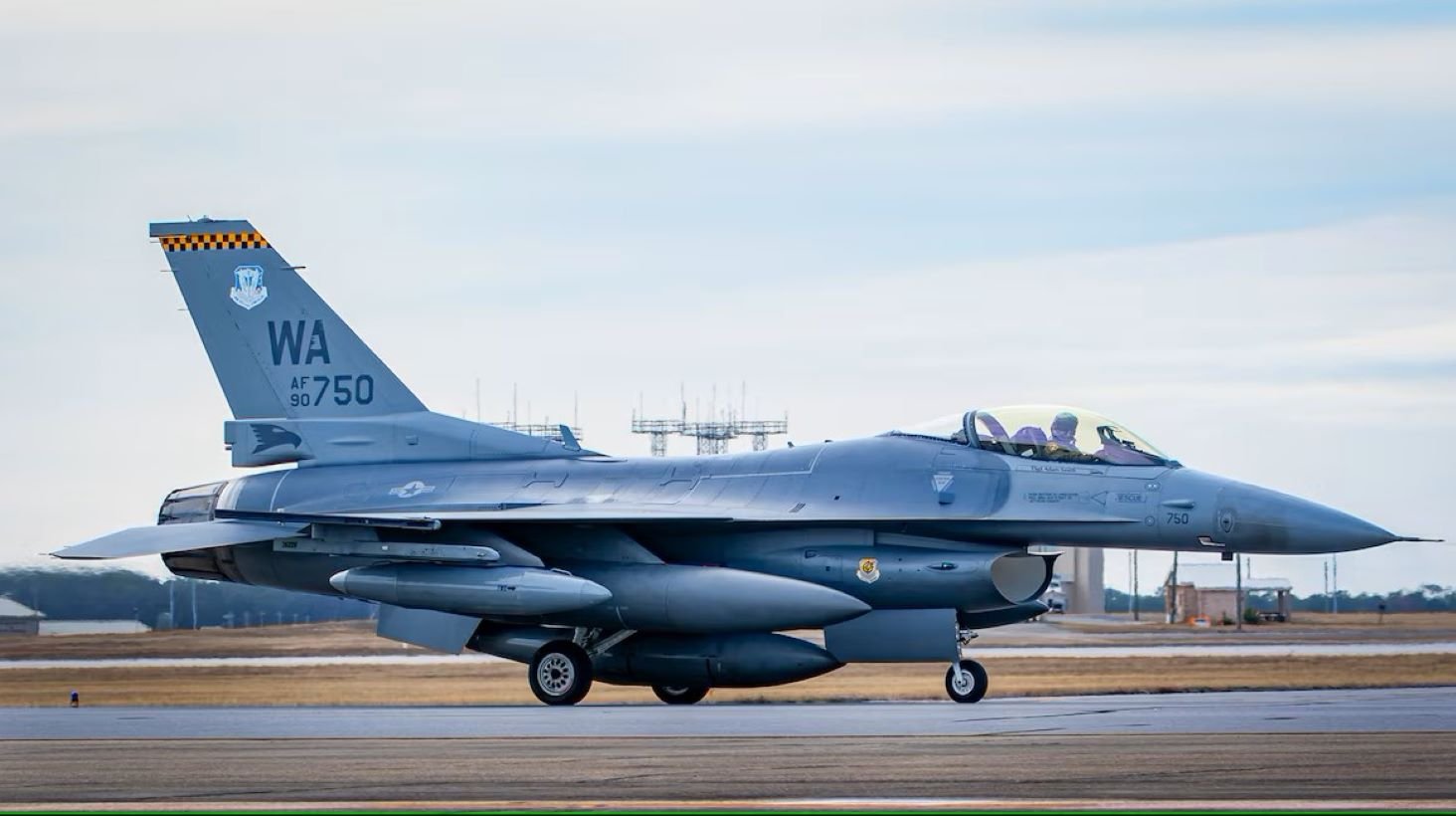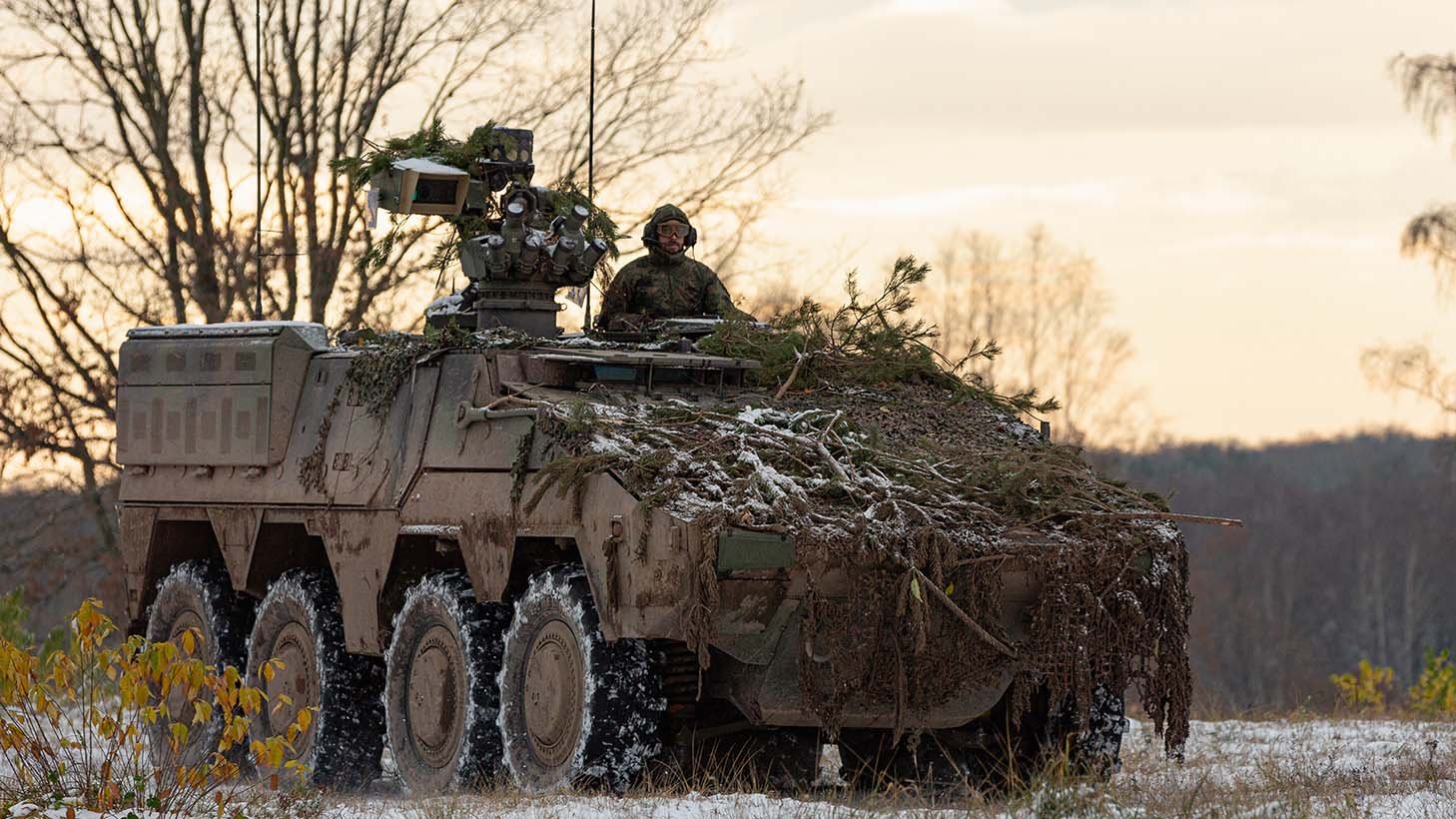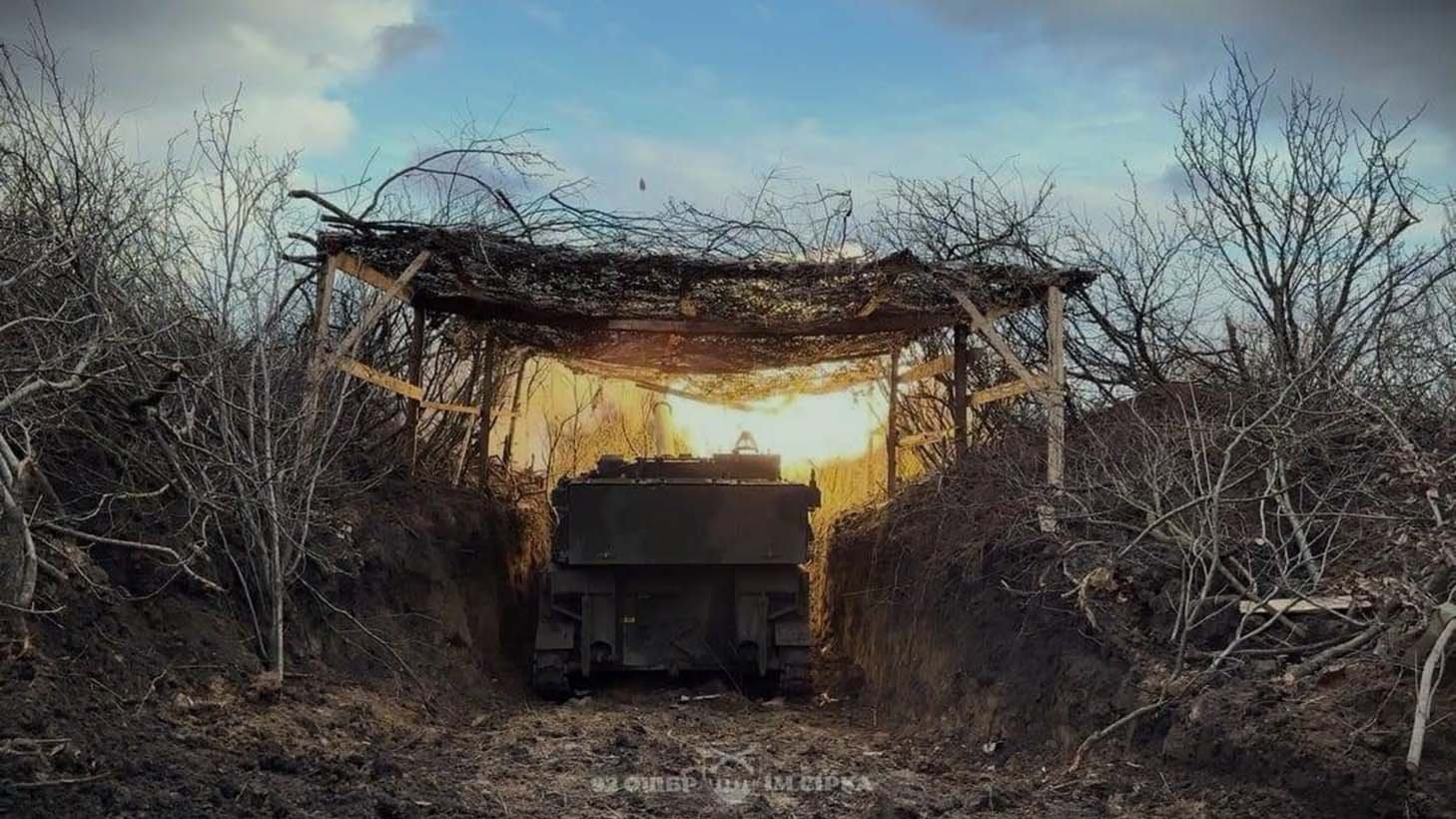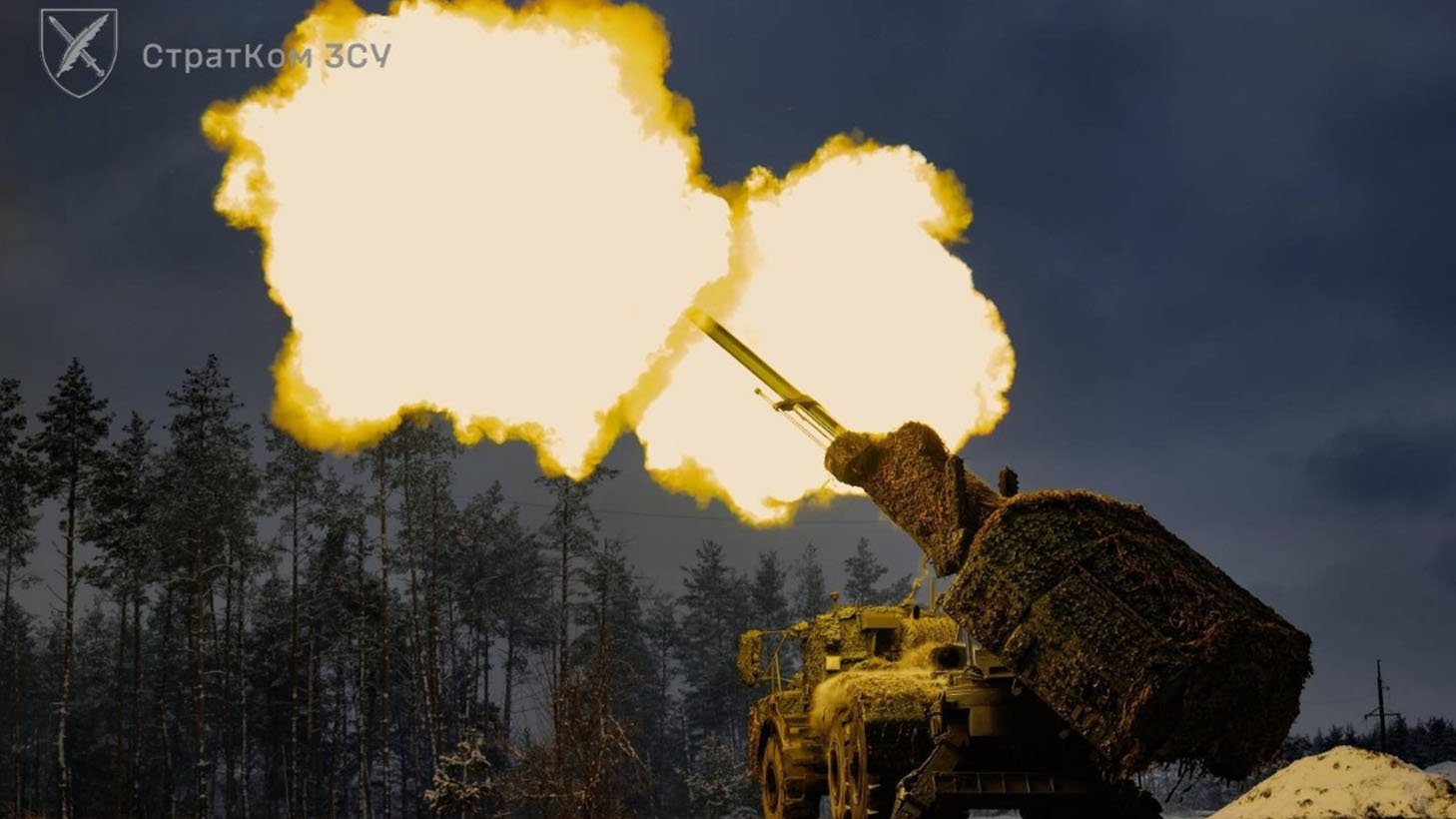-
Posts
790 -
Joined
-
Last visited
Content Type
Profiles
Uncrowned Armory News
Prepping Cookbook
Conspiracy Theories
Uncrowned Tactical Sports News
Prepping
Forums
Events
Everything posted by Uncrowned Guard
-

Escalating Tensions: Russia's Agenda Towards Kazakhstan Exposed
Uncrowned Guard posted an article in Military News
Unveiling the Threat: Shockwaves from a Leaked Recording A leaked audio recording featuring Russian General and State Duma deputy Andriy Gurulyov has ignited concerns within diplomatic circles, unveiling a disturbing plan for potential Russian aggression targeting Kazakhstan. Gurulyov's unequivocal statements in the recording indicate Kazakhstan as the next focal point for Russian expansionism, following the invasion of Ukraine. Kazakhstan in the Crosshairs: The Grim Reality Revealed In the leaked recording, Gurulyov discusses Russia's military buildup against Kazakhstan, attributing it to alleged non-compliance with Kremlin directives. He suggests that decisions regarding Kazakhstan's fate have already been made, heightening fears over the country's security. This revelation emerges amidst escalating tensions and increasing demonization of Kazakhstan by Russian media, reminiscent of the rhetoric directed against Ukraine in previous years. Fueling the Flames: Propaganda and Anti-Kazakhstan Sentiment Former KGB operative and State Duma deputy Andriy Lugovoy adds to the anti-Kazakhstan sentiment by producing a propaganda film accusing Kazakhstan of Russophobia. Meanwhile, State Duma deputy Yevgeny Fedorov questions Kazakhstan's sovereignty, proposing limitations such as a ban on joining NATO until territorial disputes are resolved. The intensifying rhetoric and legal challenges underscore Russia's aggressive stance towards its neighbor. The leaked recording and subsequent reactions highlight the precarious geopolitical landscape in Eurasia, with Kazakhstan potentially facing a similar fate as Ukraine amidst escalating tensions and threats of Russian aggression.-
- russia
- kazakhstan
- (and 8 more)
-
Accelerating the advancement of aerial combat capabilities, the 96th Test Wing and 53rd Wing have welcomed the first three F-16 Fighting Falcons to participate in the Viper Experimentation and Next-gen Operations Model – Autonomy Flying Testbed (VENOM-AFT) program. Driving Autonomous Innovation VENOM-AFT, aimed at expediting the testing of autonomy software on crewed and uncrewed aircraft, serves as a pivotal initiative funded to redefine air combat paradigms. It complements Eglin Air Force Base's autonomy data and artificial intelligence experimentation proving ground, offering insights crucial for the Collaborative Combat Aircraft program and other autonomy developers. Modifying F-16s for Testing The next phase for the VENOM program involves transforming the F-16 aircraft into test platforms to swiftly evaluate autonomous capabilities. This step marks a significant stride towards ushering in a new era of aviation, enabling the integration of novel autonomous functions for both present and future crewed and uncrewed platforms. Operational Collaboration and Testing Similar to F-16 and F-15 testing at Eglin, the VENOM program is set to undergo rigorous developmental and operational testing facilitated by the 40th Flight Test Squadron and the 85th Test and Evaluation Squadron. The integration of both developmental test and operational test pilots operating from the same location fosters daily collaboration, facilitating knowledge sharing and streamlined lessons learned. Human Oversight in Autonomy During testing, pilots will remain in the cockpit to oversee autonomy and ensure that flight and mission systems test objectives are achieved. The concept of 'human-on-the-loop' emphasizes real-time pilot involvement in autonomy, ensuring the ability to intervene and control specific algorithms as necessary, highlighting the critical role of human oversight in autonomous operations. Enhancing Autonomy Performance Operators will offer feedback throughout modeling, simulation, and post-flight stages to autonomy developers, aiding in improving performance over time and validating the appropriateness of autonomy decisions prior to and during flight. This iterative process aims to refine autonomy capabilities and ensure they align with mission objectives. Driving Rapid Tactical Autonomy Development The overarching goal of the VENOM program is to facilitate rapid iteration and expansion of knowledge for potential autonomy and payload solutions. Emphasizing "speed-to-ramp," the program prioritizes swift yet safe development to expedite the deployment of the Collaborative Combat Aircraft and other autonomous systems, further bolstering the Air Force's capabilities in the ever-evolving landscape of aerial combat. View full article
-
- f-16 fighting falcons
- venom-aft program
- (and 8 more)
-
Accelerating the advancement of aerial combat capabilities, the 96th Test Wing and 53rd Wing have welcomed the first three F-16 Fighting Falcons to participate in the Viper Experimentation and Next-gen Operations Model – Autonomy Flying Testbed (VENOM-AFT) program. Driving Autonomous Innovation VENOM-AFT, aimed at expediting the testing of autonomy software on crewed and uncrewed aircraft, serves as a pivotal initiative funded to redefine air combat paradigms. It complements Eglin Air Force Base's autonomy data and artificial intelligence experimentation proving ground, offering insights crucial for the Collaborative Combat Aircraft program and other autonomy developers. Modifying F-16s for Testing The next phase for the VENOM program involves transforming the F-16 aircraft into test platforms to swiftly evaluate autonomous capabilities. This step marks a significant stride towards ushering in a new era of aviation, enabling the integration of novel autonomous functions for both present and future crewed and uncrewed platforms. Operational Collaboration and Testing Similar to F-16 and F-15 testing at Eglin, the VENOM program is set to undergo rigorous developmental and operational testing facilitated by the 40th Flight Test Squadron and the 85th Test and Evaluation Squadron. The integration of both developmental test and operational test pilots operating from the same location fosters daily collaboration, facilitating knowledge sharing and streamlined lessons learned. Human Oversight in Autonomy During testing, pilots will remain in the cockpit to oversee autonomy and ensure that flight and mission systems test objectives are achieved. The concept of 'human-on-the-loop' emphasizes real-time pilot involvement in autonomy, ensuring the ability to intervene and control specific algorithms as necessary, highlighting the critical role of human oversight in autonomous operations. Enhancing Autonomy Performance Operators will offer feedback throughout modeling, simulation, and post-flight stages to autonomy developers, aiding in improving performance over time and validating the appropriateness of autonomy decisions prior to and during flight. This iterative process aims to refine autonomy capabilities and ensure they align with mission objectives. Driving Rapid Tactical Autonomy Development The overarching goal of the VENOM program is to facilitate rapid iteration and expansion of knowledge for potential autonomy and payload solutions. Emphasizing "speed-to-ramp," the program prioritizes swift yet safe development to expedite the deployment of the Collaborative Combat Aircraft and other autonomous systems, further bolstering the Air Force's capabilities in the ever-evolving landscape of aerial combat.
-
- f-16 fighting falcons
- venom-aft program
- (and 8 more)
-
Addressing Immediate Needs Amid Congressional Stalemate The Biden administration has unveiled a new military aid package for Ukraine, valued at $300 million, aiming to support Kyiv amidst ongoing conflict. This decision comes as additional funds for Ukraine face obstruction from Republican leaders in Congress, leading the White House to explore alternative funding avenues. The package, funded through unexpected Pentagon contract savings, focuses on supplying artillery rounds and munitions, particularly for High Mobility Artillery Rocket Systems (HIMARS), though it's acknowledged as a temporary solution to Ukraine's extensive battlefield requirements. Challenges in Sustaining Support The provision of this aid package, while crucial, is recognized as insufficient for Ukraine's long-term needs. U.S. National Security Advisor Jake Sullivan highlighted the limited duration the ammunition could support Ukraine's military efforts, emphasizing the urgent need for a more sustainable funding solution. Pentagon Press Secretary Major General Pat Ryder also noted the improbability of consistently utilizing contract savings as a means to support Kyiv, indicating a pressing need for legislative action to secure further aid. International Efforts and Strategic Implications As the U.S. seeks ways to bolster Ukraine's defenses, international collaboration and discussions on further support are underway. The announcement coincided with a meeting between Polish leadership and President Joe Biden, underlining the importance of international backing for Ukraine. The potential use of seized Russian assets to finance military assistance for Ukraine was also mentioned as an option being explored. Amidst these developments, Ukraine President Volodymyr Zelenskiy reported an improved strategic position against Russian forces but warned of the potential for new offensives and the critical impact of ongoing weapon shortages. Additionally, Denmark has committed to providing further military aid to Ukraine, and the European Union is considering a significant increase in funds for military shipments, emphasizing the global dimension of support for Ukraine's resistance against Russian aggression. View full article
-
- us military aid
- ukraine
- (and 6 more)
-
Addressing Immediate Needs Amid Congressional Stalemate The Biden administration has unveiled a new military aid package for Ukraine, valued at $300 million, aiming to support Kyiv amidst ongoing conflict. This decision comes as additional funds for Ukraine face obstruction from Republican leaders in Congress, leading the White House to explore alternative funding avenues. The package, funded through unexpected Pentagon contract savings, focuses on supplying artillery rounds and munitions, particularly for High Mobility Artillery Rocket Systems (HIMARS), though it's acknowledged as a temporary solution to Ukraine's extensive battlefield requirements. Challenges in Sustaining Support The provision of this aid package, while crucial, is recognized as insufficient for Ukraine's long-term needs. U.S. National Security Advisor Jake Sullivan highlighted the limited duration the ammunition could support Ukraine's military efforts, emphasizing the urgent need for a more sustainable funding solution. Pentagon Press Secretary Major General Pat Ryder also noted the improbability of consistently utilizing contract savings as a means to support Kyiv, indicating a pressing need for legislative action to secure further aid. International Efforts and Strategic Implications As the U.S. seeks ways to bolster Ukraine's defenses, international collaboration and discussions on further support are underway. The announcement coincided with a meeting between Polish leadership and President Joe Biden, underlining the importance of international backing for Ukraine. The potential use of seized Russian assets to finance military assistance for Ukraine was also mentioned as an option being explored. Amidst these developments, Ukraine President Volodymyr Zelenskiy reported an improved strategic position against Russian forces but warned of the potential for new offensives and the critical impact of ongoing weapon shortages. Additionally, Denmark has committed to providing further military aid to Ukraine, and the European Union is considering a significant increase in funds for military shipments, emphasizing the global dimension of support for Ukraine's resistance against Russian aggression.
-
- us military aid
- ukraine
- (and 6 more)
-
Staggering Casualties and Equipment Losses In the latest update from the conflict in Ukraine, Kyiv reports substantial Russian military losses over the past week, highlighting the intensifying toll on Moscow's forces as they make incremental advances on the northeast front lines. According to Ukraine's military, Russia has suffered the loss of more than 7,200 troops, along with significant equipment casualties, including 278 artillery systems and over 200 armored personnel vehicles (APVs). These figures contribute to the overall count of Russian casualties since the onset of the conflict, which Ukraine estimates at over 424,000 troops. Verification Challenges and the War's Attritional Nature While these numbers provided by Ukraine offer a glimpse into the severe impact of the ongoing conflict, independent verification remains elusive. The reported figures align with assessments from defense analysts, suggesting a plausible tally when considering overall casualties, missing personnel, and non-combat fatalities. This attritional warfare approach, characterized by high casualty rates and substantial equipment losses, reflects Russia's commitment to a strategy that has exerted increased pressure on Ukrainian defenses, despite the heavy toll on its own forces. Strategic and Material Challenges Both Russia and Ukraine continue to prioritize the maintenance and replenishment of their artillery and armored capabilities, critical for sustaining their respective military efforts. Recent engagements, such as Kyiv's reported attack on the Russian patrol ship Sergey Kotov, underscore the ongoing naval aspect of the conflict, with Russia's total naval losses reported by Ukraine reaching 26 vessels. The strategic advances and retreats, coupled with the attritional losses on both sides, underscore the protracted nature of the conflict and the significant resources being expended. As the war drags on, the international community keeps a close watch on the developments, aware of the difficulty in obtaining accurate casualty and equipment loss figures. Nonetheless, the reported numbers serve as a stark reminder of the conflict's high human and material costs, with both sides continuing to suffer significant losses as they vie for strategic advantages along the front lines. View full article
-
- russia-ukraine war
- military casualties
- (and 6 more)
-
Staggering Casualties and Equipment Losses In the latest update from the conflict in Ukraine, Kyiv reports substantial Russian military losses over the past week, highlighting the intensifying toll on Moscow's forces as they make incremental advances on the northeast front lines. According to Ukraine's military, Russia has suffered the loss of more than 7,200 troops, along with significant equipment casualties, including 278 artillery systems and over 200 armored personnel vehicles (APVs). These figures contribute to the overall count of Russian casualties since the onset of the conflict, which Ukraine estimates at over 424,000 troops. Verification Challenges and the War's Attritional Nature While these numbers provided by Ukraine offer a glimpse into the severe impact of the ongoing conflict, independent verification remains elusive. The reported figures align with assessments from defense analysts, suggesting a plausible tally when considering overall casualties, missing personnel, and non-combat fatalities. This attritional warfare approach, characterized by high casualty rates and substantial equipment losses, reflects Russia's commitment to a strategy that has exerted increased pressure on Ukrainian defenses, despite the heavy toll on its own forces. Strategic and Material Challenges Both Russia and Ukraine continue to prioritize the maintenance and replenishment of their artillery and armored capabilities, critical for sustaining their respective military efforts. Recent engagements, such as Kyiv's reported attack on the Russian patrol ship Sergey Kotov, underscore the ongoing naval aspect of the conflict, with Russia's total naval losses reported by Ukraine reaching 26 vessels. The strategic advances and retreats, coupled with the attritional losses on both sides, underscore the protracted nature of the conflict and the significant resources being expended. As the war drags on, the international community keeps a close watch on the developments, aware of the difficulty in obtaining accurate casualty and equipment loss figures. Nonetheless, the reported numbers serve as a stark reminder of the conflict's high human and material costs, with both sides continuing to suffer significant losses as they vie for strategic advantages along the front lines.
-
- russia-ukraine war
- military casualties
- (and 6 more)
-
Intensifying Production: Russia's Strategic Advantage As the conflict in Ukraine continues, Russia appears to be gaining a significant strategic advantage through its ability to produce artillery munitions at a pace nearly three times that of the US and Europe combined. According to NATO intelligence and a CNN exclusive report, Russia's manufacturing capabilities allow it to output approximately 250,000 artillery shells monthly, totaling around 3 million a year. In contrast, the collective capacity of the US and Europe amounts to about 1.2 million munitions annually, signaling a considerable gap in supply for Ukraine. Impact on the Ground: A Matter of Quantity and Capacity The disparity in artillery production is becoming a critical factor as both sides prepare for potential offensives. On the battlefield, Russia is reportedly firing around 10,000 shells daily, starkly outmatching Ukraine's output of 2,000 shells per day. This imbalance not only underscores the current "production war" but also poses significant challenges for Ukraine, especially in light of financial and logistical constraints faced by its allies. The situation is further exacerbated by stalling US aid and increasing Republican opposition in Congress, leaving Ukraine in a precarious position as it faces both ammunition scarcity and manpower shortages. The Road Ahead: Long-Term Strategies and Challenges Efforts are underway to mitigate the shortfall, with European nations stepping up and a German defense company planning to establish an ammunition factory in Ukraine. However, Russia's full-throttle production, supported by imports from Iran and North Korea, continues to pressurize Ukraine's defenses. While the US and its allies aim to catch up by enhancing their production capabilities, the immediate future looks challenging for Ukraine. Intelligence officials remain cautious, predicting that without a swift resumption of aid, the strategic balance may tilt further in Russia's favor, affecting the outcome of the conflict. The ongoing situation highlights the complex interplay between military capability, economic power, and political will, as both sides navigate the uncertain terrain of modern warfare. As the international community watches closely, the resilience and adaptability of Ukraine and its allies are being tested like never before. View full article
-
- russia-ukraine conflict
- artillery production
- (and 6 more)
-
Intensifying Production: Russia's Strategic Advantage As the conflict in Ukraine continues, Russia appears to be gaining a significant strategic advantage through its ability to produce artillery munitions at a pace nearly three times that of the US and Europe combined. According to NATO intelligence and a CNN exclusive report, Russia's manufacturing capabilities allow it to output approximately 250,000 artillery shells monthly, totaling around 3 million a year. In contrast, the collective capacity of the US and Europe amounts to about 1.2 million munitions annually, signaling a considerable gap in supply for Ukraine. Impact on the Ground: A Matter of Quantity and Capacity The disparity in artillery production is becoming a critical factor as both sides prepare for potential offensives. On the battlefield, Russia is reportedly firing around 10,000 shells daily, starkly outmatching Ukraine's output of 2,000 shells per day. This imbalance not only underscores the current "production war" but also poses significant challenges for Ukraine, especially in light of financial and logistical constraints faced by its allies. The situation is further exacerbated by stalling US aid and increasing Republican opposition in Congress, leaving Ukraine in a precarious position as it faces both ammunition scarcity and manpower shortages. The Road Ahead: Long-Term Strategies and Challenges Efforts are underway to mitigate the shortfall, with European nations stepping up and a German defense company planning to establish an ammunition factory in Ukraine. However, Russia's full-throttle production, supported by imports from Iran and North Korea, continues to pressurize Ukraine's defenses. While the US and its allies aim to catch up by enhancing their production capabilities, the immediate future looks challenging for Ukraine. Intelligence officials remain cautious, predicting that without a swift resumption of aid, the strategic balance may tilt further in Russia's favor, affecting the outcome of the conflict. The ongoing situation highlights the complex interplay between military capability, economic power, and political will, as both sides navigate the uncertain terrain of modern warfare. As the international community watches closely, the resilience and adaptability of Ukraine and its allies are being tested like never before.
-
- russia-ukraine conflict
- artillery production
- (and 6 more)
-
End of an Era Sweden, a nation renowned for over two centuries of neutrality, is poised to embark on a significant transformation by joining the North Atlantic Treaty Organization (NATO). This move marks a departure from Sweden's longstanding policy of nonalignment, a practice that has defined its international stance since the conclusion of its last military engagement in 1814. Prime Minister Ulf Kristersson underscored the magnitude of this shift, acknowledging the end of Sweden's era of neutrality and nonalignment. This decision, driven by the geopolitical upheavals following Russia's invasion of Ukraine in 2022, reflects Sweden's response to the evolving security landscape in Europe. From Neutrality to NATO The concept of neutrality has deep roots in Sweden's history, dating back to the early 19th century. It enabled Sweden to avoid entanglement in the conflicts of major powers, fostering peace and prosperity within its borders. However, the invasion of Ukraine by Russia signaled a profound change in the global order, prompting Sweden to reconsider its stance on military alliances. The shift in public opinion was swift and significant, with support for NATO membership rising sharply in the wake of the invasion. This reevaluation of Sweden's security policy culminates in its pending membership in NATO, an alliance that promises collective defense in the face of external threats. Security Concerns and Military Preparedness The transition to NATO membership brings with it new security considerations. While the prospect of enhanced protection under the alliance's umbrella is reassuring, it also introduces anxieties about the potential for heightened tensions with Russia. Sweden's history of military readiness, despite its neutral status, underscores a pragmatic approach to defense. The nation has historically maintained a capable military force, adapting its strategy to the geopolitical realities of each era. The reestablishment of military units and the return of conscription in recent years reflect Sweden's commitment to ensuring its security in an increasingly uncertain world. Sweden's Role on the Global Stage Sweden's journey from neutrality to NATO membership does not signify a departure from its values as a proponent of peace and humanitarianism. Instead, it represents an evolution in its approach to safeguarding these ideals in a changing global context. As Sweden prepares to formalize its alliance with NATO, it remains committed to contributing to international stability and upholding the principles that have long guided its foreign policy. This historic decision, rooted in a pragmatic assessment of contemporary security challenges, marks a new chapter in Sweden's engagement with the world. Sweden's impending NATO membership is a testament to the dynamic nature of global politics and the necessity of adapting to new security realities. While this move signifies a departure from centuries of neutrality, it also affirms Sweden's ongoing commitment to peace, stability, and cooperation on the international stage. As Sweden navigates this transition, it carries forward its legacy of diplomacy and humanitarian leadership into a new era of collective defense and geopolitical engagement. View full article
-
End of an Era Sweden, a nation renowned for over two centuries of neutrality, is poised to embark on a significant transformation by joining the North Atlantic Treaty Organization (NATO). This move marks a departure from Sweden's longstanding policy of nonalignment, a practice that has defined its international stance since the conclusion of its last military engagement in 1814. Prime Minister Ulf Kristersson underscored the magnitude of this shift, acknowledging the end of Sweden's era of neutrality and nonalignment. This decision, driven by the geopolitical upheavals following Russia's invasion of Ukraine in 2022, reflects Sweden's response to the evolving security landscape in Europe. From Neutrality to NATO The concept of neutrality has deep roots in Sweden's history, dating back to the early 19th century. It enabled Sweden to avoid entanglement in the conflicts of major powers, fostering peace and prosperity within its borders. However, the invasion of Ukraine by Russia signaled a profound change in the global order, prompting Sweden to reconsider its stance on military alliances. The shift in public opinion was swift and significant, with support for NATO membership rising sharply in the wake of the invasion. This reevaluation of Sweden's security policy culminates in its pending membership in NATO, an alliance that promises collective defense in the face of external threats. Security Concerns and Military Preparedness The transition to NATO membership brings with it new security considerations. While the prospect of enhanced protection under the alliance's umbrella is reassuring, it also introduces anxieties about the potential for heightened tensions with Russia. Sweden's history of military readiness, despite its neutral status, underscores a pragmatic approach to defense. The nation has historically maintained a capable military force, adapting its strategy to the geopolitical realities of each era. The reestablishment of military units and the return of conscription in recent years reflect Sweden's commitment to ensuring its security in an increasingly uncertain world. Sweden's Role on the Global Stage Sweden's journey from neutrality to NATO membership does not signify a departure from its values as a proponent of peace and humanitarianism. Instead, it represents an evolution in its approach to safeguarding these ideals in a changing global context. As Sweden prepares to formalize its alliance with NATO, it remains committed to contributing to international stability and upholding the principles that have long guided its foreign policy. This historic decision, rooted in a pragmatic assessment of contemporary security challenges, marks a new chapter in Sweden's engagement with the world. Sweden's impending NATO membership is a testament to the dynamic nature of global politics and the necessity of adapting to new security realities. While this move signifies a departure from centuries of neutrality, it also affirms Sweden's ongoing commitment to peace, stability, and cooperation on the international stage. As Sweden navigates this transition, it carries forward its legacy of diplomacy and humanitarian leadership into a new era of collective defense and geopolitical engagement.
-
Leak Emerges Online Germany is set to conduct a thorough investigation following the emergence of a leaked recording that captured a private conversation among high-ranking German military officials discussing the country’s strategy regarding the Ukraine conflict. The recording, which was released online by Margarita Simonyan, the chief of Russia's state-backed RT channel, has sparked significant concern within the German government and military. Content of the Leaked Discussion The leaked audio reveals a detailed conversation among Air Force officers deliberating over the potential provision of Taurus long-range missile systems to Ukraine. Additionally, the dialogue touched upon the strategic targeting of the Kerch Bridge, a critical infrastructure link between the annexed Crimean peninsula and mainland Russia. The authenticity of the recording was confirmed by a spokesperson from the German Defense Ministry, though there remains uncertainty regarding any alterations to the circulated content. Government and Military Response Chancellor Olaf Scholz described the leak as a "very serious matter" and assured that it would be "investigated very carefully, very intensively, and very quickly." The discussion in the recording primarily revolved around the logistics of supporting Ukraine with air force capabilities, specifically the deployment of Taurus missiles, and included speculation on targeting strategies for the Kerch bridge and ammunition depots. The possibility of using these missiles for attacks on Russian territory has been a contentious issue, with Germany expressing reservations about sending the weapons to Kyiv. International and Political Repercussions The leak has prompted a strong reaction from Moscow, with Russian Foreign Ministry spokesperson Maria Zakharova demanding prompt explanations from the German government. Zakharova warned that any delay or evasion in responding would be interpreted as an admission of guilt. The incident has also raised alarms within the German political sphere, with concerns about the potential interception and future release of other sensitive discussions. Roberich Kiesewetter, a member of the Christian Democratic Union (CDU), highlighted the vulnerability of such communications to being intercepted and the implications it could have for Germany's diplomatic and military posture. View full article
-
- germany
- ukraine conflict
- (and 6 more)
-
Leak Emerges Online Germany is set to conduct a thorough investigation following the emergence of a leaked recording that captured a private conversation among high-ranking German military officials discussing the country’s strategy regarding the Ukraine conflict. The recording, which was released online by Margarita Simonyan, the chief of Russia's state-backed RT channel, has sparked significant concern within the German government and military. Content of the Leaked Discussion The leaked audio reveals a detailed conversation among Air Force officers deliberating over the potential provision of Taurus long-range missile systems to Ukraine. Additionally, the dialogue touched upon the strategic targeting of the Kerch Bridge, a critical infrastructure link between the annexed Crimean peninsula and mainland Russia. The authenticity of the recording was confirmed by a spokesperson from the German Defense Ministry, though there remains uncertainty regarding any alterations to the circulated content. Government and Military Response Chancellor Olaf Scholz described the leak as a "very serious matter" and assured that it would be "investigated very carefully, very intensively, and very quickly." The discussion in the recording primarily revolved around the logistics of supporting Ukraine with air force capabilities, specifically the deployment of Taurus missiles, and included speculation on targeting strategies for the Kerch bridge and ammunition depots. The possibility of using these missiles for attacks on Russian territory has been a contentious issue, with Germany expressing reservations about sending the weapons to Kyiv. International and Political Repercussions The leak has prompted a strong reaction from Moscow, with Russian Foreign Ministry spokesperson Maria Zakharova demanding prompt explanations from the German government. Zakharova warned that any delay or evasion in responding would be interpreted as an admission of guilt. The incident has also raised alarms within the German political sphere, with concerns about the potential interception and future release of other sensitive discussions. Roberich Kiesewetter, a member of the Christian Democratic Union (CDU), highlighted the vulnerability of such communications to being intercepted and the implications it could have for Germany's diplomatic and military posture.
-
- germany
- ukraine conflict
- (and 6 more)
-
Major Safety Flaw Identified In a concerning revelation for gun owners, the United States Consumer Product Safety Commission has issued a recall for over 120,000 biometric safes across the United States. This recall impacts various models from Bulldog, Machir, BBRKIN/Moutec, and Awesafe due to a critical flaw that could potentially allow unauthorized access with an incorrect fingerprint. Recalled Safe Models and Instructions The recall specifically involves Bulldog Magnum Biometric Pistol Vaults among others, which are designed to securely store firearms and valuables. Despite their robust appearance and biometric security features, these safes have been found to unlock with unregistered fingerprints. Consumers are urgently advised to cease using the biometric functionality of these safes, remove the safes' batteries, and rely solely on the key lock mechanism for securing their contents. Bulldog has committed to providing affected customers with either a repair kit or a replacement safe at no cost. Consumer Safety Measures and Reports This recall follows multiple reports of these safes being accessed by unauthorized individuals despite the biometric security measures. Fortunately, there have been no injuries reported as a result of this flaw. However, the potential for such incidents underscores the gravity of the recall. The safes, manufactured in China, were available for purchase at major retailers such as Bass Pro Shops and Wal-Mart, as well as online platforms from 2016 through early 2024. Continued Vigilance for Safe Owners This incident serves as a stark reminder of the importance of regularly reviewing and testing the security features of biometric safes. Manufacturers and distributors are making efforts to rectify this issue by offering replacements or repair solutions to ensure the safety and security of firearms and valuables stored within these safes. Owners of the affected models are encouraged to follow the recall instructions closely to safeguard against unauthorized access. View full article
-
- biometric safes
- recall alert
- (and 4 more)
-

Safety First: Recall Issued for Faulty Biometric Safes
Uncrowned Guard posted an article in Firearm Accessories
Major Safety Flaw Identified In a concerning revelation for gun owners, the United States Consumer Product Safety Commission has issued a recall for over 120,000 biometric safes across the United States. This recall impacts various models from Bulldog, Machir, BBRKIN/Moutec, and Awesafe due to a critical flaw that could potentially allow unauthorized access with an incorrect fingerprint. Recalled Safe Models and Instructions The recall specifically involves Bulldog Magnum Biometric Pistol Vaults among others, which are designed to securely store firearms and valuables. Despite their robust appearance and biometric security features, these safes have been found to unlock with unregistered fingerprints. Consumers are urgently advised to cease using the biometric functionality of these safes, remove the safes' batteries, and rely solely on the key lock mechanism for securing their contents. Bulldog has committed to providing affected customers with either a repair kit or a replacement safe at no cost. Consumer Safety Measures and Reports This recall follows multiple reports of these safes being accessed by unauthorized individuals despite the biometric security measures. Fortunately, there have been no injuries reported as a result of this flaw. However, the potential for such incidents underscores the gravity of the recall. The safes, manufactured in China, were available for purchase at major retailers such as Bass Pro Shops and Wal-Mart, as well as online platforms from 2016 through early 2024. Continued Vigilance for Safe Owners This incident serves as a stark reminder of the importance of regularly reviewing and testing the security features of biometric safes. Manufacturers and distributors are making efforts to rectify this issue by offering replacements or repair solutions to ensure the safety and security of firearms and valuables stored within these safes. Owners of the affected models are encouraged to follow the recall instructions closely to safeguard against unauthorized access.-
- biometric safes
- recall alert
- (and 4 more)
-
A Request for Moscow's Intervention In a significant move that has drawn the international community's attention, Transnistria, a pro-Russian breakaway region in Moldova, has formally sought Moscow's assistance. The region's self-proclaimed authorities have made an appeal for measures to safeguard Transnistria against perceived threats from the Moldovan government. This request for protection, articulated through a congress of senior officials, underscores the deep-seated tensions and the geopolitical complexities surrounding this enclave. Russia's Calculated Silence The anticipation around Russian President Vladimir Putin's potential response to Transnistria's plea was palpable, especially considering the timing of his state-of-the-nation address. Despite expectations, Putin remained conspicuously silent about Transnistria in his speech, leaving analysts and observers speculating about Russia's next steps. The Russian Foreign Ministry, however, underscored its commitment to safeguarding the interests of Transnistria's residents, emphasizing the strategic importance Moscow places on its "compatriots" in the region. International Reactions and Implications Moldova's dismissal of Transnistria's allegations as mere propaganda reflects the ongoing struggle for influence and stability in the region. Meanwhile, the international community, particularly the United States, has expressed concern over the developments, with the State Department closely monitoring Russia's maneuvers in Transnistria. The fear is that Moscow might leverage this situation to further its territorial ambitions in Europe, especially against the backdrop of its ongoing aggression in Ukraine. A Delicate Balance The appeal from Transnistria's pro-Russian leadership for Moscow's protection is more than a local plea; it's a testament to the fragile geopolitical equilibrium in Eastern Europe. As the West keeps a watchful eye on Putin's strategies, the implications of any Russian intervention in Transnistria could have far-reaching consequences for regional stability and the broader contest for influence between Russia and the West. The situation remains tense, with all eyes on Moscow's next move amidst a complex tapestry of historical ties, strategic interests, and international diplomacy. View full article
-
- transnistria
- russia
- (and 6 more)
-
A Request for Moscow's Intervention In a significant move that has drawn the international community's attention, Transnistria, a pro-Russian breakaway region in Moldova, has formally sought Moscow's assistance. The region's self-proclaimed authorities have made an appeal for measures to safeguard Transnistria against perceived threats from the Moldovan government. This request for protection, articulated through a congress of senior officials, underscores the deep-seated tensions and the geopolitical complexities surrounding this enclave. Russia's Calculated Silence The anticipation around Russian President Vladimir Putin's potential response to Transnistria's plea was palpable, especially considering the timing of his state-of-the-nation address. Despite expectations, Putin remained conspicuously silent about Transnistria in his speech, leaving analysts and observers speculating about Russia's next steps. The Russian Foreign Ministry, however, underscored its commitment to safeguarding the interests of Transnistria's residents, emphasizing the strategic importance Moscow places on its "compatriots" in the region. International Reactions and Implications Moldova's dismissal of Transnistria's allegations as mere propaganda reflects the ongoing struggle for influence and stability in the region. Meanwhile, the international community, particularly the United States, has expressed concern over the developments, with the State Department closely monitoring Russia's maneuvers in Transnistria. The fear is that Moscow might leverage this situation to further its territorial ambitions in Europe, especially against the backdrop of its ongoing aggression in Ukraine. A Delicate Balance The appeal from Transnistria's pro-Russian leadership for Moscow's protection is more than a local plea; it's a testament to the fragile geopolitical equilibrium in Eastern Europe. As the West keeps a watchful eye on Putin's strategies, the implications of any Russian intervention in Transnistria could have far-reaching consequences for regional stability and the broader contest for influence between Russia and the West. The situation remains tense, with all eyes on Moscow's next move amidst a complex tapestry of historical ties, strategic interests, and international diplomacy.
-
- transnistria
- russia
- (and 6 more)
-
Historic Deployment Since WWII According to Euronews, Germany is committing to a move not seen since the aftermath of World War II, Germany is set to station approximately 5,000 soldiers in Lithuania by 2027. This deployment marks a significant shift in German military policy, reflecting the evolving security landscape in Eastern Europe. The initiative aims to bolster NATO's eastern flank in response to rising tensions following Russia's aggressive actions in Ukraine. Strategic Reinforcement and Family Accompaniment The decision, announced by German Defence Minister Boris Pistorius, underscores Germany's commitment to its NATO obligations and the protection of allied territories. Pistorius highlighted the uniqueness of this deployment, noting it involves long-term stationing with provisions for accompanying family members—a testament to the seriousness with which Germany views this mission. The move is expected to cost around €30 million per month, a substantial investment in regional stability. Addressing the Suwalki Gap Vulnerability Strategically located near the Russian enclave of Kaliningrad and Belarus, Lithuania's security is paramount to NATO's defense strategy. German forces, including two combat battalions, will be stationed just 100 km from the Russian border. This deployment is particularly crucial for safeguarding the Suwalki Gap, a narrow corridor connecting Lithuania to Poland, which is seen as a potential flashpoint in the event of further Russian aggression. NATO's bolstered presence in Lithuania through Germany's commitment is a clear signal of the alliance's readiness to defend its members against external threats. View full article
-
Historic Deployment Since WWII According to Euronews, Germany is committing to a move not seen since the aftermath of World War II, Germany is set to station approximately 5,000 soldiers in Lithuania by 2027. This deployment marks a significant shift in German military policy, reflecting the evolving security landscape in Eastern Europe. The initiative aims to bolster NATO's eastern flank in response to rising tensions following Russia's aggressive actions in Ukraine. Strategic Reinforcement and Family Accompaniment The decision, announced by German Defence Minister Boris Pistorius, underscores Germany's commitment to its NATO obligations and the protection of allied territories. Pistorius highlighted the uniqueness of this deployment, noting it involves long-term stationing with provisions for accompanying family members—a testament to the seriousness with which Germany views this mission. The move is expected to cost around €30 million per month, a substantial investment in regional stability. Addressing the Suwalki Gap Vulnerability Strategically located near the Russian enclave of Kaliningrad and Belarus, Lithuania's security is paramount to NATO's defense strategy. German forces, including two combat battalions, will be stationed just 100 km from the Russian border. This deployment is particularly crucial for safeguarding the Suwalki Gap, a narrow corridor connecting Lithuania to Poland, which is seen as a potential flashpoint in the event of further Russian aggression. NATO's bolstered presence in Lithuania through Germany's commitment is a clear signal of the alliance's readiness to defend its members against external threats.
-

UnionPay Disruption Hits Russia: Sanctions' Ripple Effects
Uncrowned Guard posted an article in Ongoing Conflicts
China's UnionPay Payment Challenges Impact Russian Transactions Recent developments have indicated a significant disruption in the functionality of UnionPay, China's payment system, for users in Russia. This comes as a notable shift, given that UnionPay had emerged as a key financial conduit for Russians in the wake of Western sanctions and the withdrawal of major card payment services like Visa and Mastercard due to the ongoing conflict in Ukraine. UnionPay and Huawei Pay Face Operational Hurdles Users have encountered difficulties with UnionPay cards, particularly those linked to Huawei Pay, signaling a halt in the service's operations within Russia. Reports from local news sources highlight user complaints regarding the inability to process payments, suggesting a potential compliance with international sanctions. The blockage appears to specifically affect digital transactions via Huawei Pay, while physical UnionPay card payments reportedly continue unaffected. The restrictions are believed to stem from sanctions against Russia's National Payment Card System (NSPK), crucial for processing UnionPay transactions in the country. The Broader Context of Sanctions and International Banking The disruption ties into a broader narrative of economic challenges faced by Russia due to sanctions imposed by the international community. Following its invasion of Ukraine, Russia became the world's most sanctioned country, leading to severe economic repercussions including frozen foreign exchange reserves and exclusion from the SWIFT banking system. UnionPay's adoption had been viewed as a lifeline, enabling Russians to conduct international transactions amidst these constraints. However, recent actions by leading Chinese banks to cease accepting payments from sanctioned Russian financial institutions further complicate the situation. Citing the potential for secondary sanctions from the United States, major Chinese banks have adjusted their policies, affecting transactions with Russian entities. This move underscores the complex interplay of international finance, sanctions, and geopolitical relationships, particularly between China and Russia. Implications and Future Prospects These developments mark a significant moment in the ongoing financial saga surrounding Russia's international isolation and the search for alternative payment solutions. The impact on UnionPay and the broader implications for Sino-Russian economic relations highlight the tangible effects of sanctions on global commerce and finance. As the situation evolves, the responses of international and Chinese financial systems will be closely watched for their implications on Russia's ability to navigate its economic sanctions landscape.-
- unionpay
- russia sanctions
- (and 6 more)
-
China's UnionPay Payment Challenges Impact Russian Transactions Recent developments have indicated a significant disruption in the functionality of UnionPay, China's payment system, for users in Russia. This comes as a notable shift, given that UnionPay had emerged as a key financial conduit for Russians in the wake of Western sanctions and the withdrawal of major card payment services like Visa and Mastercard due to the ongoing conflict in Ukraine. UnionPay and Huawei Pay Face Operational Hurdles Users have encountered difficulties with UnionPay cards, particularly those linked to Huawei Pay, signaling a halt in the service's operations within Russia. Reports from local news sources highlight user complaints regarding the inability to process payments, suggesting a potential compliance with international sanctions. The blockage appears to specifically affect digital transactions via Huawei Pay, while physical UnionPay card payments reportedly continue unaffected. The restrictions are believed to stem from sanctions against Russia's National Payment Card System (NSPK), crucial for processing UnionPay transactions in the country. The Broader Context of Sanctions and International Banking The disruption ties into a broader narrative of economic challenges faced by Russia due to sanctions imposed by the international community. Following its invasion of Ukraine, Russia became the world's most sanctioned country, leading to severe economic repercussions including frozen foreign exchange reserves and exclusion from the SWIFT banking system. UnionPay's adoption had been viewed as a lifeline, enabling Russians to conduct international transactions amidst these constraints. However, recent actions by leading Chinese banks to cease accepting payments from sanctioned Russian financial institutions further complicate the situation. Citing the potential for secondary sanctions from the United States, major Chinese banks have adjusted their policies, affecting transactions with Russian entities. This move underscores the complex interplay of international finance, sanctions, and geopolitical relationships, particularly between China and Russia. Implications and Future Prospects These developments mark a significant moment in the ongoing financial saga surrounding Russia's international isolation and the search for alternative payment solutions. The impact on UnionPay and the broader implications for Sino-Russian economic relations highlight the tangible effects of sanctions on global commerce and finance. As the situation evolves, the responses of international and Chinese financial systems will be closely watched for their implications on Russia's ability to navigate its economic sanctions landscape. View full article
-
- unionpay
- russia sanctions
- (and 6 more)
-

Advancing Adversaries: Russia's Strategic Gains in Ukraine
Uncrowned Guard posted an article in Ongoing Conflicts
Russian Forces Make Advances in Eastern Ukraine Recent reports indicate that Russian military units are making significant progress in areas west of Avdiivka, further intensifying the conflict in Eastern Ukraine. According to sources and military bloggers from Russia, the advancement includes the capture of strategic locations, presenting new challenges for Ukrainian defense efforts in the region. Strategic Shifts and Ukrainian Response Russian forces are reported to have captured key villages, including Lastochkyne, Sieverne, and Stepove, as they push further west from Avdiivka. The Institute for the Study of War (ISW), a U.S.-based think tank, highlighted these developments but noted the inability to independently verify the claims. The loss of Avdiivka in early February marked a significant setback for Ukraine, following over four months of intense combat. In response, Kyiv's forces have established new defensive lines and reportedly repelled multiple Russian offensives in the surrounding areas. Ukraine's strategic realignment around villages such as Lastochkyne and Novobakhmutivka demonstrates a continued effort to halt Russian advances. Despite the challenges, Ukrainian military spokespersons have confirmed successful defense operations against Russian attempts to push forward, underscoring the resilience and strategic planning of Kyiv's forces in the face of escalating aggression. The Human Cost of Conflict The battle for Avdiivka and its aftermath underscore the brutal nature of the ongoing conflict, with both sides incurring significant losses. The Ukrainian withdrawal from Avdiivka was described by officials as a necessary move to preserve the lives of its soldiers, highlighting the city's transformation into a "meat grinder" of warfare. President Volodymyr Zelensky emphasized the importance of saving Ukrainian lives, reflecting on the defense strategy during his address at the Munich Security Conference. Russian military claims of territorial gains come amid reports of heavy casualties, with thousands of soldiers reported killed or wounded in the fighting for Avdiivka alone. Ukrainian military sources provide staggering figures on Russian losses, although the exact number of casualties remains difficult to verify. The conflict continues to exact a heavy toll on combatants and civilians alike, with no immediate resolution in sight. The recent developments in Eastern Ukraine reveal the complex and dynamic nature of the conflict, as both sides navigate the strategic and humanitarian challenges of war. As the situation evolves, the international community remains closely attuned to the impact of these advances on the broader security landscape in the region.-
- eastern ukraine
- avdiivka
- (and 5 more)
-
Russian Forces Make Advances in Eastern Ukraine Recent reports indicate that Russian military units are making significant progress in areas west of Avdiivka, further intensifying the conflict in Eastern Ukraine. According to sources and military bloggers from Russia, the advancement includes the capture of strategic locations, presenting new challenges for Ukrainian defense efforts in the region. Strategic Shifts and Ukrainian Response Russian forces are reported to have captured key villages, including Lastochkyne, Sieverne, and Stepove, as they push further west from Avdiivka. The Institute for the Study of War (ISW), a U.S.-based think tank, highlighted these developments but noted the inability to independently verify the claims. The loss of Avdiivka in early February marked a significant setback for Ukraine, following over four months of intense combat. In response, Kyiv's forces have established new defensive lines and reportedly repelled multiple Russian offensives in the surrounding areas. Ukraine's strategic realignment around villages such as Lastochkyne and Novobakhmutivka demonstrates a continued effort to halt Russian advances. Despite the challenges, Ukrainian military spokespersons have confirmed successful defense operations against Russian attempts to push forward, underscoring the resilience and strategic planning of Kyiv's forces in the face of escalating aggression. The Human Cost of Conflict The battle for Avdiivka and its aftermath underscore the brutal nature of the ongoing conflict, with both sides incurring significant losses. The Ukrainian withdrawal from Avdiivka was described by officials as a necessary move to preserve the lives of its soldiers, highlighting the city's transformation into a "meat grinder" of warfare. President Volodymyr Zelensky emphasized the importance of saving Ukrainian lives, reflecting on the defense strategy during his address at the Munich Security Conference. Russian military claims of territorial gains come amid reports of heavy casualties, with thousands of soldiers reported killed or wounded in the fighting for Avdiivka alone. Ukrainian military sources provide staggering figures on Russian losses, although the exact number of casualties remains difficult to verify. The conflict continues to exact a heavy toll on combatants and civilians alike, with no immediate resolution in sight. The recent developments in Eastern Ukraine reveal the complex and dynamic nature of the conflict, as both sides navigate the strategic and humanitarian challenges of war. As the situation evolves, the international community remains closely attuned to the impact of these advances on the broader security landscape in the region. View full article
-
- eastern ukraine
- avdiivka
- (and 5 more)
-
Europe Takes Charge in Global Effort to Support Ukraine with Artillery Shells As the conflict in Ukraine continues, European nations, along with partners like Canada, have taken the lead in addressing a critical shortage of artillery shells needed by Ukraine. With the United States facing internal delays over aid packages, the push to provide Ukraine with essential military supplies has become a global endeavor, highlighting a significant shift in international military support dynamics. A Worldwide Scramble for Ammunition In a notable pivot from traditional roles, countries such as Germany, Denmark, the Czech Republic, and Canada are spearheading efforts to amass artillery shells to assist Ukraine. The urgency of this mission stems from the escalating costs and demand for NATO-standard 155mm howitzer shells, exacerbated by the ongoing conflict. Ukrainian President Volodymyr Zelensky has voiced concerns over the soaring prices of artillery shells on the international market, emphasizing the dire need for these munitions to defend the nation and its civilians. The quest for ammunition has led to significant depletion of reserves in major European countries, risking their own security preparedness. The Struggle for Sufficient Supplies Ukraine's struggle to maintain adequate artillery ammunition has been a persistent challenge throughout the conflict with Russia. Despite brief periods of sufficient supplies, the Ukrainian Armed Forces have faced critical shortages, impacting their ability to defend key positions and conduct counteroffensives. The recent loss of a strategically important town underscored the dire consequences of ammunition scarcity. Efforts by the European Union to address this shortfall include commitments to deliver a significant number of shells by the end of the year, although these initiatives have faced delays and logistical hurdles. International Initiatives and Future Prospects In response to the urgent need for artillery shells, several countries and entities have proposed innovative solutions to bypass production and political hurdles. The Czech Republic, for instance, has proposed a plan to acquire significant quantities of ammunition through international markets, with countries like India being potential suppliers. Canada has also pledged financial support for these initiatives. Meanwhile, European manufacturers are ramping up production capacities, with new factories and production lines expected to significantly boost shell production in the coming years. This global mobilization underscores the international community's commitment to supporting Ukraine amid its defense against aggression. With European countries leading the charge, the collective effort aims to overcome logistical challenges and ensure Ukraine receives the crucial support needed for its defense and sovereignty.
-
- ukraine conflict
- artillery shells shortage
- (and 5 more)
-
Europe Takes Charge in Global Effort to Support Ukraine with Artillery Shells As the conflict in Ukraine continues, European nations, along with partners like Canada, have taken the lead in addressing a critical shortage of artillery shells needed by Ukraine. With the United States facing internal delays over aid packages, the push to provide Ukraine with essential military supplies has become a global endeavor, highlighting a significant shift in international military support dynamics. A Worldwide Scramble for Ammunition In a notable pivot from traditional roles, countries such as Germany, Denmark, the Czech Republic, and Canada are spearheading efforts to amass artillery shells to assist Ukraine. The urgency of this mission stems from the escalating costs and demand for NATO-standard 155mm howitzer shells, exacerbated by the ongoing conflict. Ukrainian President Volodymyr Zelensky has voiced concerns over the soaring prices of artillery shells on the international market, emphasizing the dire need for these munitions to defend the nation and its civilians. The quest for ammunition has led to significant depletion of reserves in major European countries, risking their own security preparedness. The Struggle for Sufficient Supplies Ukraine's struggle to maintain adequate artillery ammunition has been a persistent challenge throughout the conflict with Russia. Despite brief periods of sufficient supplies, the Ukrainian Armed Forces have faced critical shortages, impacting their ability to defend key positions and conduct counteroffensives. The recent loss of a strategically important town underscored the dire consequences of ammunition scarcity. Efforts by the European Union to address this shortfall include commitments to deliver a significant number of shells by the end of the year, although these initiatives have faced delays and logistical hurdles. International Initiatives and Future Prospects In response to the urgent need for artillery shells, several countries and entities have proposed innovative solutions to bypass production and political hurdles. The Czech Republic, for instance, has proposed a plan to acquire significant quantities of ammunition through international markets, with countries like India being potential suppliers. Canada has also pledged financial support for these initiatives. Meanwhile, European manufacturers are ramping up production capacities, with new factories and production lines expected to significantly boost shell production in the coming years. This global mobilization underscores the international community's commitment to supporting Ukraine amid its defense against aggression. With European countries leading the charge, the collective effort aims to overcome logistical challenges and ensure Ukraine receives the crucial support needed for its defense and sovereignty. View full article
-
- ukraine conflict
- artillery shells shortage
- (and 5 more)















